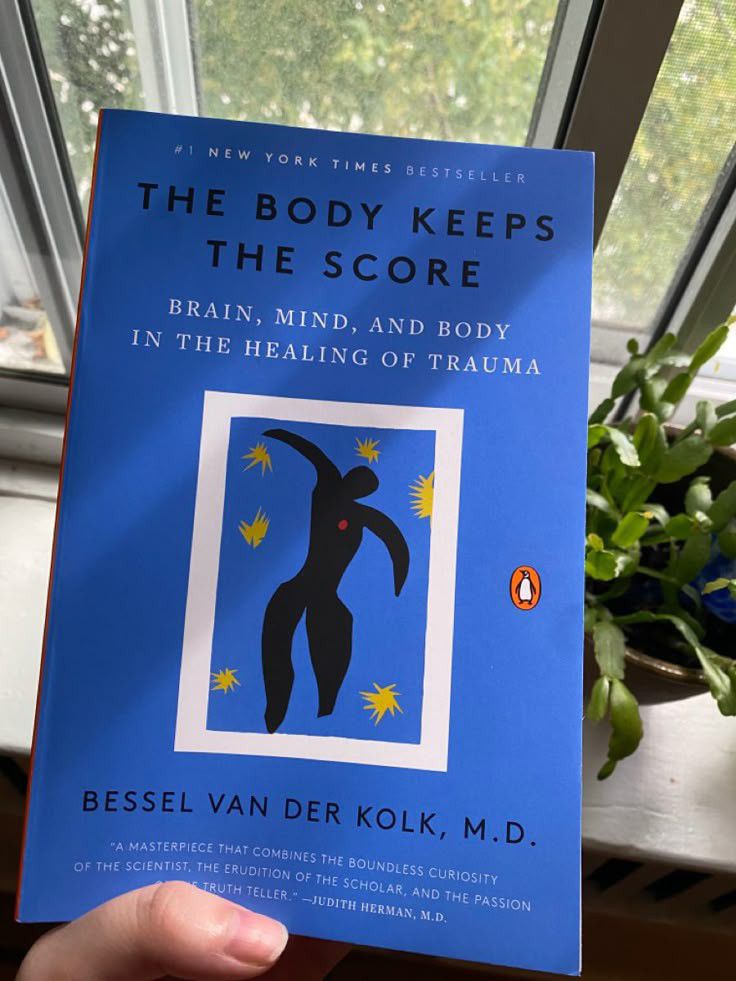The Body Keeps the Score: Brain, Mind, and Body in the Healing of Trauma is a groundbreaking book written by Dr. Bessel van der Kolk, a renowned psychiatrist and trauma expert. First published in 2014, the book explores the profound and often long-lasting effects of trauma on both the mind and body, and it presents a comprehensive approach to understanding and healing trauma through various therapeutic practices.
Dr. van der Kolk’s work is rooted in over three decades of clinical practice and research in the field of trauma, particularly how traumatic experiences impact individuals’ mental and physical well-being. The book provides an in-depth exploration of trauma and its effects on the brain, body, and relationships, emphasizing that trauma is not only a psychological condition but a physical one that can shape how the body functions and reacts.
Here’s a breakdown of some of the central themes in the book:
1. Trauma’s Impact on the Brain:
Dr. van der Kolk explains how trauma affects the brain, particularly areas like the amygdala (responsible for processing fear), the hippocampus (which is involved in memory), and the prefrontal cortex (which helps regulate emotions and behavior). Trauma can impair the brain’s ability to process emotions, leading to conditions like PTSD (Post-Traumatic Stress Disorder), anxiety, depression, and other mental health challenges.
He details how people with trauma histories may experience heightened states of fear, emotional numbness, or dissociation, which can prevent them from processing memories or emotions properly. Trauma can leave individuals feeling “stuck” in the past, unable to move forward or make sense of their experiences.
2. The Body’s Role in Trauma:
A key argument in “The Body Keeps the Score” is that trauma is stored not only in the mind but in the body itself. Dr. van der Kolk draws on research and case studies to illustrate how traumatic experiences can manifest in physical symptoms, such as chronic pain, autoimmune disorders, and sleep disturbances. He explains how the body “remembers” trauma, even if the conscious mind has tried to forget it.
Through a process known as somatic memory, trauma can remain in the body, influencing behavior, muscle tension, posture, and even the immune system. In many cases, people with unresolved trauma may experience frequent physical ailments that are connected to past experiences but are not recognized as such by healthcare professionals.
3. Traditional Approaches vs. Holistic Healing:
One of the most important aspects of Dr. van der Kolk’s book is his critique of traditional psychiatric treatments for trauma, particularly the reliance on medications and talk therapy alone. While he acknowledges the usefulness of medication in certain cases, he stresses that addressing the body’s involvement in trauma is equally important for true healing.
He advocates for a more holistic approach, integrating body-focused therapies alongside traditional methods. These include techniques like EMDR (Eye Movement Desensitization and Reprocessing), yoga, neurofeedback, theater, dance, and art therapy, all of which help individuals reconnect with their bodies, process trauma, and regain a sense of control and safety.
4. Trauma and Relationships:
Van der Kolk also delves into the effect of trauma on relationships. Survivors of trauma often struggle with intimacy, trust, and attachment, which can impact both personal and professional relationships. The book explores the ways in which trauma disrupts interpersonal connections and how individuals who have experienced trauma may feel isolated, misunderstood, or alienated.
In his work, Dr. van der Kolk emphasizes the importance of social connections and support networks in the healing process. Relationships with supportive people can help trauma survivors feel safe and begin to rebuild their sense of trust, community, and belonging.
5. Healing Through Trauma-Informed Approaches:
The book goes beyond identifying the problems caused by trauma—it offers hope through trauma-informed treatment. Dr. van der Kolk stresses the significance of creating safe spaces for trauma survivors, where they can feel understood and empowered. He explains that healing is a gradual and individualized process, and no single approach works for everyone.
Dr. van der Kolk also emphasizes that healing from trauma is not just about getting rid of symptoms but about restoring a sense of agency, self-worth, and connection to others. It involves learning to navigate life with greater resilience and a deeper understanding of one’s experiences.
6. Personal Stories and Case Studies:
Throughout “The Body Keeps the Score,” Dr. van der Kolk includes numerous personal stories and case studies of individuals who have experienced trauma. These stories not only humanize the scientific findings but also illustrate the various ways trauma manifests in people’s lives, from childhood abuse to military combat experiences.
These stories serve as both a source of hope and inspiration, showing that healing is possible, even after the most devastating of experiences. By sharing these narratives, Dr. van der Kolk highlights the power of treatment, connection, and self-compassion in overcoming trauma.
Conclusion:
The Body Keeps the Score is a landmark work in the field of trauma studies. Dr. van der Kolk’s expertise and empathy come through as he breaks down complex scientific ideas into accessible language, making it easier for readers to understand the deep connection between trauma, the brain, and the body.
The book is essential reading for anyone interested in understanding trauma and its effects on mental and physical health. It provides a comprehensive roadmap for healing, emphasizing the importance of treating trauma with compassion, patience, and a multi-disciplinary approach. It serves as both a guide for clinicians and a resource for trauma survivors, offering hope and practical tools for recovery.
If you’re looking to understand how trauma affects not only the mind but the body as well, The Body Keeps the Score offers invaluable insights that can help you or someone you know on the journey toward healing.
